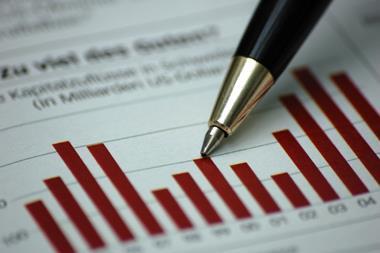The UN Sustainable Development Goals (SDGs) are not just relevant for investors pursuing impact-oriented strategies, as they are closely tied to financial materiality, according to new research from BlackRock.
In a new paper, the asset manager said it found a significant overlap between the SDGs and company indicators that are material to long-term financial performance, “which denotes the additional value the UNS SDGs can likely deliver to complement the broader integration of ESG factors in investment decisions”.
To test how the goals could be viewed through the lens of financial materiality, the asset manager turned to the Sustainability Accounting Standards Board (SASB) framework, mapping the 980 indicators it identifies as financially material for different sectors to the 242 SDG country indicators.
This unveiled a match of around 70%, with the highest correspondence found in the environment, business model and innovation, and human capital categories.
The sectors with the highest match of material indicators linked to the SDG country indicators were extractives minerals processing and infrastructure.
Four of the goals constituted over half of all SASB materiality indicators mapped to the SDG country indicators, BlackRock found: clean water and sanitation (SDG 6), decent work and economic growth (SDG 8), affordable and clean energy (SDG 7), and responsible consumption and production (SDG12).
“Investors tend to use the SDGs as a way to measure the impact of their investment, but what we’re showing with this research and with this overlap is that the SDGs are also relevant for other sustainable investment strategies and not only impact strategies,” Carole Crozat, head of fundamental research at BlackRock Sustainable Investing, told IPE.
“Traditionally we would look at the SDGs as being additional to the financial performance objective or sitting aside a bit, but what we’re saying is that there is an interesting resonance between the two so you shouldn’t be considering this apart from the overall investment objective.”
The research showed that the SDGs might be “a guidepost for future financial materiality,” Crozat said.
In its paper, BlackRock said the overlap between SASB and the SGDs showed that corporates’ management of negative social and environmental externalities today may become more material in the future as countries progress towards achieving the goals.
“Therefore, integrating the UN SDGs is relevant for long-term investors to not only align their strategies with sustainable objectives, but also to incorporate associated risks and opportunities into their broader ESG integration strategy,” said the asset manager.
In a statement, Philipp Hildebrand, vice chair of BlackRock, said the UN SDGs “can highlight to investors the interdependencies between financial and sustainable performance”.
BlackRock said SASB offered the most relevant referential for the analysis it carried out, but that the asset managaer “also acknowledges the important contributions of other global frameworks that focus on both financial and broader stakeholder materiality”, including Global Reporting Initiative and the EU “NFRD/CSRD initiative” in the EU.





























No comments yet